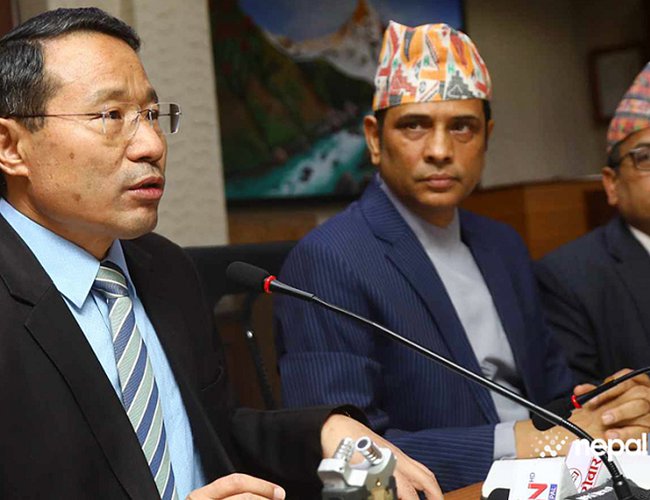
These efforts have been further supported by the recent budget announcement for 2024-2025 by Finance Minister Barsha Man Pun. For the first time, the budget recognizes the importance of constructing energy-efficient and climate-resilient buildings.
During his budget speech on May 25, Minister Pun emphasized the need to improve climate adaptation and energy efficiency in the construction of buildings at the federal, provincial and local levels.
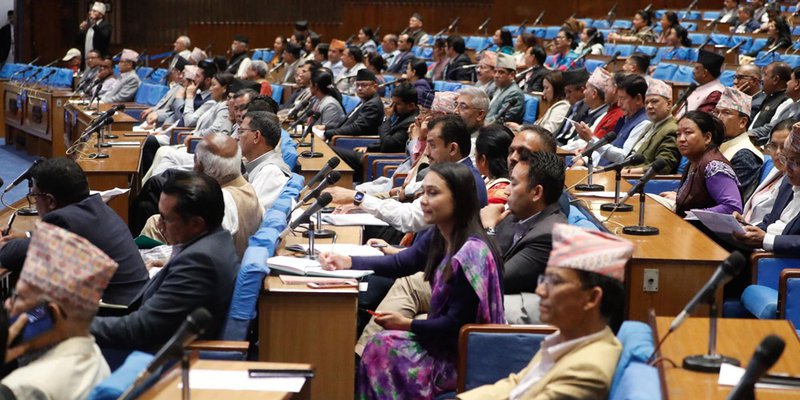
The implementation of BEEN, a four-year project, has been led by the University of Innsbruck, Austria (UIBK), in collaboration with the Asociación Española de Normalización (UNE), Greentech Knowledge Solutions Pvt Ltd, and MinErgy Pvt Ltd. The project covers 60 Municipalities in Bagmati, Lumbini and Gandaki provinces, representing the four bio-climatic zones of Nepal.
Over the past two years, BEEN has successfully advocated for the implementation of energy efficient building practices as a long-term solution for climate adaptation at the local level. Despite the recent increase in extreme temperatures, many people have been quick to install air conditioners, not realizing that this is not a sustainable approach to climate change. However, Finance Minister Pun's announcement has the potential to change this trend.
Currently,20 of the 60 local governments are in the final stages of amending their local bylaws to make energy efficiency a mandatory requirement for new construction. The Finance Minister's announcement is significant.
The fact that Finance Minister Pun made this announcement is a testament to the growing relevance and importance of BEEN's approach at all levels of government.
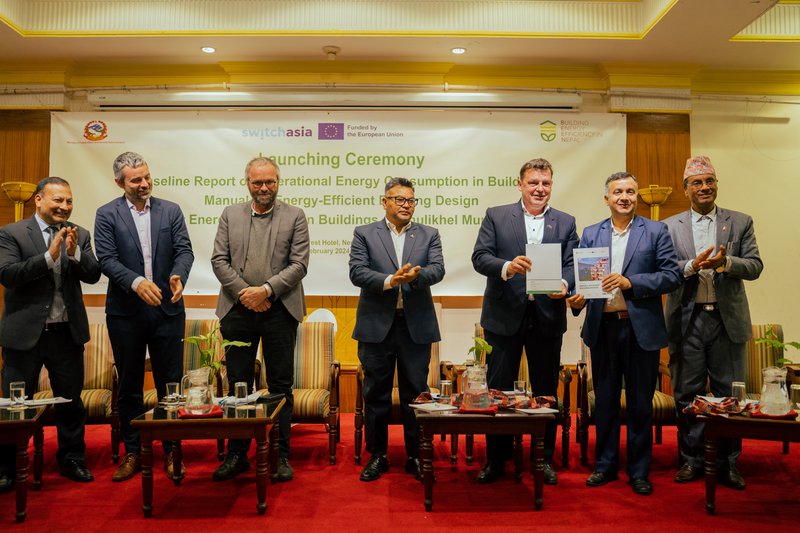
Through close collaboration with various stakeholders, BEEN has actively promoted climate-responsive building design and retrofits, as well as the use of energy-efficient space heating and cooling technologies, resource-efficient building materials, and the integration of renewable energy sources.
BEEN has made significant progress in promoting low-carbon and resource-efficient building practices in Nepal's construction industry.
By supporting the development, construction, and renovation of green buildings, BEEN has successfully influenced national policy in a relatively short period of time.
Despite its brevity, the announcement will have a far-reaching impact on construction practices at all levels. Suyesh Prajapati, team leader of the BEEN project, highlighted the groundbreaking inclusion of energy-efficient building requirements in the Nepalese government's annual budget. The Finance Minister's explicit policy directive for energy efficient buildings at the federal, provincial, and local government levels marks a pivotal moment in addressing these critical issues.
BEEN's efforts have been instrumental in promoting the adoption of sustainable building practices in Nepal's construction sector. By supporting the design, construction, and renovation of climate-friendly buildings, BEEN has successfully influenced national policy in a relatively short period of time.
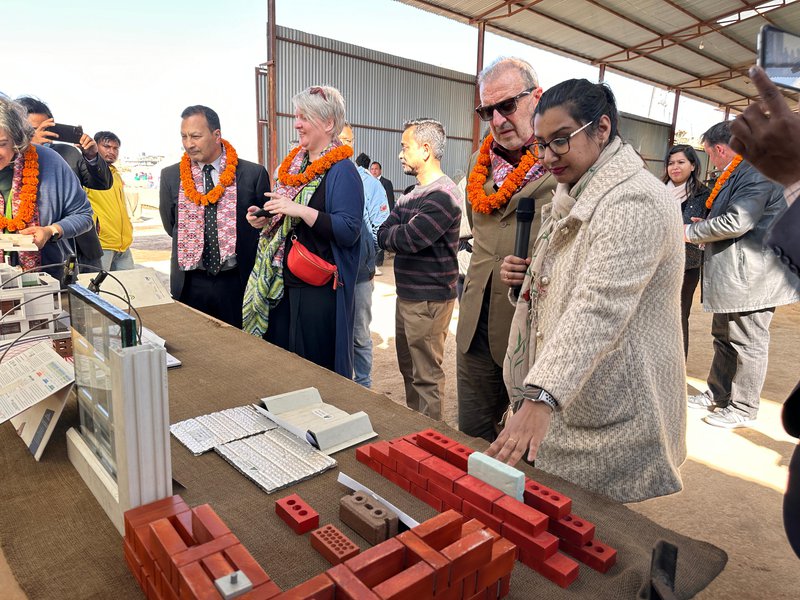
Prajapati noted that BEEN has been successful in taking its energy efficiency agenda from the local to the national level. Of the 60 local governments, 50 have already initiated the process of adopting by-laws that include the energy efficiency agenda.
To strengthen the technical capacity of these local governments, BEEN has conducted training sessions for more than 200 technical staff from these municipalities.
This training aims to facilitate the implementation of the energy efficiency agenda in building construction. As a result of these efforts, 120 energy efficient buildings have already been constructed in these areas with the support of BEEN. Similarly, BEEN has provided training to more than 200 Micro, Small and Medium Enterprises (MSMEs) from different sectors such as designers and brick manufacturers. These businesses have the capacity to provide energy efficient services and products.
"We will work with 4 associations and build the capacity of 8 categories of MSMEs including: architects, engineers, contractors, renewable energy service providers, door-window service providers, insulation service providers, heating, ventilation and air conditioning (HVAC) service providers, renewable energy service providers, and building material manufacturers, especially hollow brick manufacturers," said Prajapati.
Even before the adoption of the national agenda, NABIL Bank has already formulated a housing loan package for green building. In addition, the bank has announced its commitment to provide concessional loans at lower interest rates for the construction of green houses.
"In this context, the inclusion of the energy efficiency agenda at the national level is of immense importance," emphasized Prajapati.
The research findings indicate that the inappropriately design buildings has led to a significant increase in energy usage, with approximately 60 percent of energy being consumed for heating and cooling purposes in modern buildings in Kathmandu.
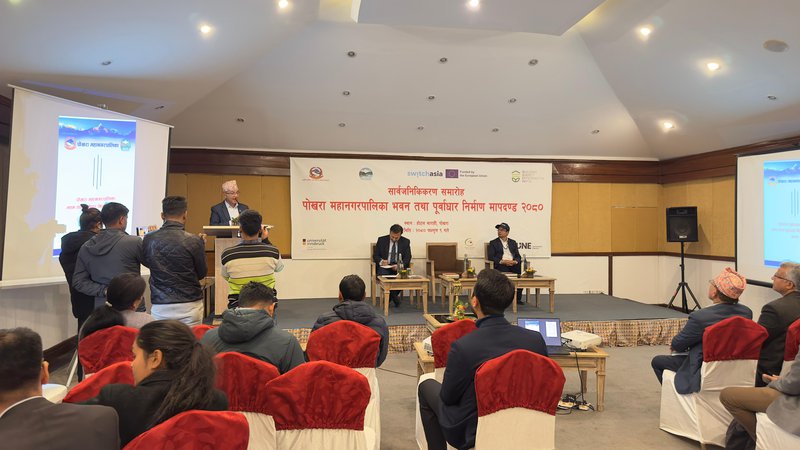
Prajapati said, "When discussing climate change and rising temperatures, it is crucial to consider the thermal environment in our homes. Our goal is not only to reduce electricity bills, but also to ensure thermal comfort".
Energy-efficient buildings play a crucial role in grid stabilization. Studies conducted in Europe have shown that the energy consumption of buildings is a major cause of blackouts. This is particularly problematic during peak load periods.
The construction of concrete houses in the Terai, Hill and Himalayan regions has been done without proper guidelines and policies at the national level. This has resulted in the same type of houses being built in areas with extreme hot and cold climates. The result is increased energy consumption to heat houses in some areas and keep them cool in others.
Experts emphasize the importance of taking local weather conditions into account when constructing buildings and designing air conditioning systems accordingly.
With the continued rapid urbanization and construction of new buildings, there is a growing need for policies that promote the economical and efficient use of energy in these structures.
Nepal has taken a different approach to building codes than neighboring countries such as India, Sri Lanka, and Pakistan. Recently, local municipalities have begun to develop and enforce energy-efficient building codes as part of the building permit process.
Although still in its early stages, standards have been established to ensure that buildings are constructed in accordance with climate adaptation and energy efficiency requirements. Pokhara Metropolitan Municipality and Dhulikhel Municipality both adopted these standards for the first time during the municipal assembly meetings. Pokhara has set a precedent by being the first local level to enforce such standards, which also take into account land use, public health, and other essential facilities.
To meet its commitment to achieve zero greenhouse gas emissions by 2045, the government has pledged to implement the National Building Code at all local levels. This initiative aims to reduce coal consumption and air pollution in the brick and cement industries. In addition, the government will revise the Urban Environmental Management Guidelines by 2025 to promote low-carbon and climate-adapted urban settlements.
Prajapati stresses the importance of these measures. He emphasizes that by implementing these initiatives, Nepal can make a significant contribution to reducing its carbon footprint. Statistics from the last census show that more than 1.2 million new houses have been built in the country over the past decade.
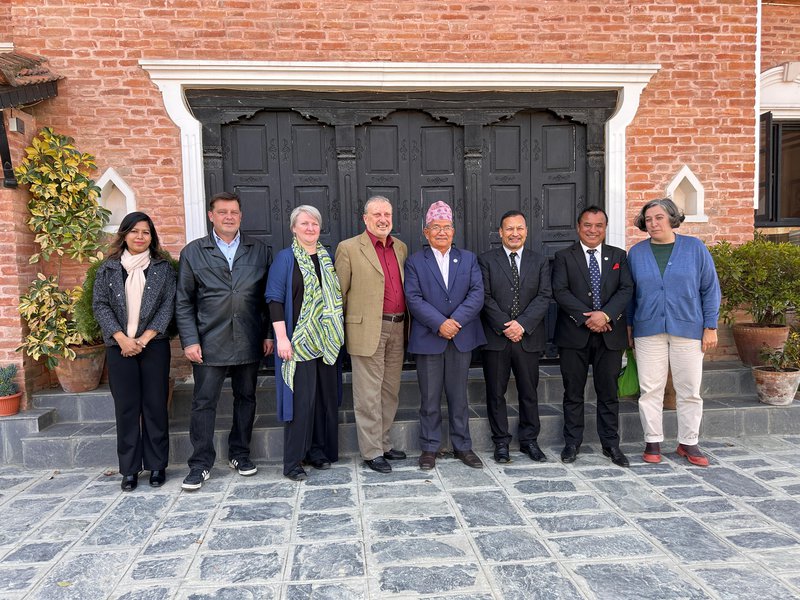
Most houses are built in urban areas due to increasing urbanization. The use of energy-intensive building materials, including bricks, contributes to the high carbon footprint of the building sector.
The construction of energy efficient buildings in metropolitan cities, sub-metropolitan cities and communities can have positive economic, social and environmental impacts.
Research conducted by BEEN has shown that changing government behavior and policies is not only about the cost and scale of change, but also about the relevance of the agenda and context. Funded by the European Union through the Switch Asia Project, BEEN is one of the few projects with the capacity to influence both national and local levels of provinces.
- Global IME Capital’s “Samunnat Yojana 2” Mutual Fund Opens for Public Offering from July 6
- Jul 03, 2025
- Nepal Among Investment-Friendly Countries, Immense Opportunities Exist – Prime Minister
- Jul 03, 2025
- Supreme Court upholds appointment of 52 officials
- Jul 03, 2025
- Weather Forecast: Generally Cloudy In The Hilly Areas With Heavy Rainfall In Some Areas Of Bagmati And Koshi Province
- Jul 03, 2025
- MCA-Nepal Welcomes Continued U.S. Support for MCC Nepal Compact Implementation
- Jul 02, 2025















